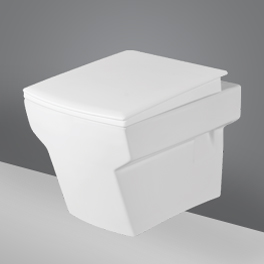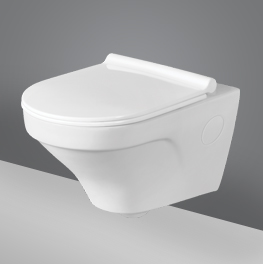
India is a country with a rapidly growing population, and as a result, the demand for sanitation products is increasing. The Indian ceramic toilet manufacturing industry has been one of the significant contributors to the country's economy. The industry has experienced significant growth in the past few years, with many players entering the market to meet the demand for high-quality and affordable sanitary ware products.
Steady growth in the country’s real estate sector and government initiatives aimed at improving sanitation across India are expected to drive demand for ceramic sanitary ware over the forecast period.
Overview of the Indian Ceramic Toilet Manufacturing Industry
The Indian ceramic toilet manufacturing industry is a part of the Indian ceramic industry that encompasses the production of sanitary ware, including toilets, washbasins, urinals, and other bathroom fixtures. The industry has been growing at a rapid pace, driven by an increase in demand for sanitation products due to the rising population and urbanization. The market size of the Indian ceramic toilet manufacturing industry was estimated to be around INR 6,500 crores in 2020, and it is expected to grow at a CAGR of 9.6% from 2021 to 2026.
Challenges Faced by the Indian Ceramic Industry
Sanitary ware manufacturers have the opportunity to capitalize on the increasing demand for bathroom fixtures in developed and emerging markets. This market is driven by the growing disposable incomes of consumers and the trend towards green buildings and sustainable architecture.
Although the Indian ceramic toilet manufacturing industry has been growing at a rapid pace, it is not without its challenges. One of the significant challenges faced by the industry is the competition from low-cost imports from China and other countries. These imports are cheaper and often of lower quality, making it difficult for domestic players to compete. Additionally, the lack of skilled labor and infrastructure in some parts of the country also poses a challenge for the industry.

However, one challenge that manufacturers will face is low replacement cycles. As demand for sanitary ware products continues to grow, it will be important to develop innovative product designs and technologies that improve efficiency.
To meet the demands of consumers, manufacturers must offer high-quality products that are both affordable and functional. This includes offering a variety of options for users, such as toilets that are water-efficient and eco-friendly.
Opportunities for Growth to Indian Ceramic Industry
Despite the challenges, the Indian ceramic toilet manufacturing industry offers significant opportunities for growth. The increasing focus on sanitation and hygiene, especially in the wake of the COVID-19 pandemic, has led to a surge in demand for ceramic toilets and other sanitary ware products. Furthermore, the government's focus on initiatives such as Swachh Bharat Abhiyan and Housing for All has also created a significant demand for sanitation products.
This industry also offers opportunities for manufacturers to expand their market share and reach consumers who are more interested in environmentally friendly products. This is due to the growing popularity of green buildings and sustainable architecture.
The India ceramic sanitary ware market is expected to grow at a CAGR of 10.3% during the forecast period. In value terms, the market is expected to reach US$ 57,444 thousand units by 2026.
Innovation in Indian Ceramic Industry
Innovation is an important factor that drives the ceramic toilet manufacturing industry. New technologies can help manufacturers produce products that meet customer needs and enhance their competitive edge.

Despite this, some challenges still remain in the market. These challenges include the need to improve product performance and reduce production costs.
However, these challenges can be overcome by manufacturers who adopt innovative technologies and invest in research and development. This can result in improved products and increased profitability.
The ceramic sanitary ware market is a growing sector, which is driven by various factors such as rapid urbanization, changing consumer lifestyles, and increasing spending on bathroom equipment. This is especially true in emerging countries, where the average expenditure on bathroom products has significantly grown over the past five years.
Make an Appoinment
Send us Message
Visit us at Address
Vagadiya Road, Thangadh - 363530,
Gujarat, India.
Gujarat, India.
© Copyright 2024, Orient Ceramics, All Rights Reserved.
Web Design & Development by Opal Infotech